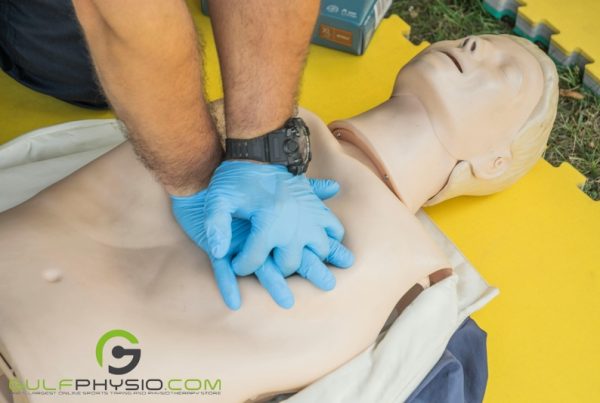If you’re struggling with fibromyalgia or myofascial pain syndrome, you might wonder at first what the difference is. Both conditions cause chronic pain, and both can cause a range of other health problems. This article will compare the two conditions and in addition, explain how they differ. We’ll also advise you on finding the best treatment for your situation.
What Is Fibromyalgia And Myofascial Pain Syndrome?
Fibromyalgia
Fibromyalgia syndrome (FMS) in detail is a long-term, debilitating disorder that causes widespread tenderness and pain. In fact, you’ll feel tired, have headaches, and have trouble sleeping. No trigger points are involved, but it causes generalized pain and soreness.
Myofascial Pain Syndrome
Myofascial pain syndrome in short is a chronic illness that causes muscle and skeletal pain. For instance, localized discomfort occurs in a specific area. Hence, it’s usually muscle trigger points that cause discomfort. Even though this disorder differs significantly from FMS, people still think it’s just a subtype.
What Is The Difference Between Fibromyalgia And Myofascial Pain Syndrome?
These two diseases in particular are chronic pain disorders. Therefore, it means they result in pain that persists over time and can be hard to treat. In fact, pain location is perhaps the most common feature between MPS and FM.
| Feature | Myofascial Pain Syndrome | Fibromyalgia |
| Trigger/Tender Points | Few, localized trigger point | Multiple, generalized tender points |
| Musculoskeletal Pain | Localized | Generalized |
| Pain in a different spot other than its source | More frequent | Less frequent |
| Fatigue | Less frequent | More frequent |
| Poor sleep | Less frequent | More frequent |
| Burning, prickling, or tingling sensation | Less frequent | More frequent |
| Headache | Less frequent | More frequent |
| Irritable bowel | Less frequent | More frequent |
| Sensation of swelling | Less frequent | More frequent |
Myofascial Pain Syndrome vs Fibromyalgia Symptoms
| Symptoms | Myofascial Pain Syndrome | Fibromyalgia |
| Muscle pain – ranging from mild to severe | ✅ | ✅ |
| Headaches | ✅ | ✅ |
| Unpleasant sleep | ✅ | ✅ |
| Balance problems | ✅ | ✅ |
| Dizziness | ✅ | ✅ |
| Ringing in the ears | ✅ | ✅ |
| Ear pain | ✅ | ✅ |
| Memory trouble | ✅ | ✅ |
| Random sweating | ✅ | ✅ |
| Worsening symptoms under stress, physical activity, or bad weather | ✅ | ❌ |
| Nausea | ❌ | ❌ |
| Exhaustion or fatigue | ❌ | ✅ |
| Peripheral numbness | ✅ | ❌ |
| Disorientation | ❌ | ✅ |
| Joints clicking | ✅ | ❌ |
| Panic attacks | ❌ | ✅ |
| Blurred vision | ✅ | ❌ |
| Sensitivity to noise | ❌ | ✅ |
| Light and noise sensitivity | ❌ | ✅ |
| Allergies | ❌ | ✅ |
How Do I Know If I Have Fibromyalgia Or Myofascial Pain Syndrome?
All things considered, there is currently no gold standard diagnostic test for myofascial pain syndrome and fibromyalgia. But, it is possible to identify both through clinical testing.
A thorough physical exam and presentation of classic symptoms are usually important for further diagnosing myofascial pain syndrome. When doctors examine a sore muscle, they gently press it and feel tight spots. Applying pressure to a tender area might cause certain responses, specifically muscle twitches. Additionally, myofascial pain syndrome may require additional tests to rule out other possible causes of muscle pain.
Meanwhile, there are two steps to diagnosing fibromyalgia. Firstly, it is first necessary to rule out other conditions that share similar symptoms to fibromyalgia. Secondly, a fibromyalgia diagnosis involves gathering information about the symptoms. Likewise, you need to use standardized survey criteria like the Widespread Pain Index Symptom Severity Scale and a tender point count. Additionally, to diagnose fibromyalgia, pain must be severe. There must have been no other medical illness related to it, and it also has to last for at least three months.
Tender Points vs. Trigger Points
It’s important to know the difference between tender and trigger points.
| Features | Tender Points | Trigger Points |
| Definition | Tender points can also help diagnose fibromyalgia. All in all, these are hypersensitive areas of the body where even a light touch can basically cause excruciating pain. | The term “trigger point” refers to a specific area of muscle or connective tissue that, when pressed, can cause pain to radiate to another location. |
| Location | There are 18 specific tender points located equally at nine bilateral locations. Here are nine spots that are tender to the touch on both the right and left sides of the body: Occiput Low cervical Trapezius Supraspinatus Lateral epicondyle Gluteal Greater trochanter Knee | Myofascial pain and trigger points can surprisingly develop in any muscle in the body. However, the most commonly affected muscles are those in the upper back, shoulder and neck. Summing up, these muscles include the: Sternocleidomastoid Trapezius Levator scapulae Infraspinatus Teres minor Rhomboids |
| Specific Point | The specific point is tender. | The point itself may or may not be tender. |
| Referred Pain | Tender points do not cause referred pain. | Trigger points refer pain to other areas. |
| Multiple Points | There are always multiple points. | There may be a single point or multiple points. |
| Symmetrical Location | Points occur in specific symmetrical locations. | Points may occur in any skeletal muscle. |
| Diagnosis | FM requires pain in at least 11 tender points. | Myofascial TPs basically have no gold standard diagnostic criterion. |
Can You Have Both Myofascial Pain And Fibromyalgia?
Yes, certainly. You can have both fibromyalgia and myofascial pain syndrome. In order to diagnose the difference between the two and provide the proper treatment, it’s critical to ask a medical expert.
A Note From Gulf Physio
We hope you’ve enjoyed learning about the subject matter above. This blog post is not a substitute for medical advice. The author cannot guarantee the accuracy of the information presented. If you have any questions or concerns, please consult a healthcare professional. All decisions and actions you make are your own. No one involved in making this resource is liable for its use.


